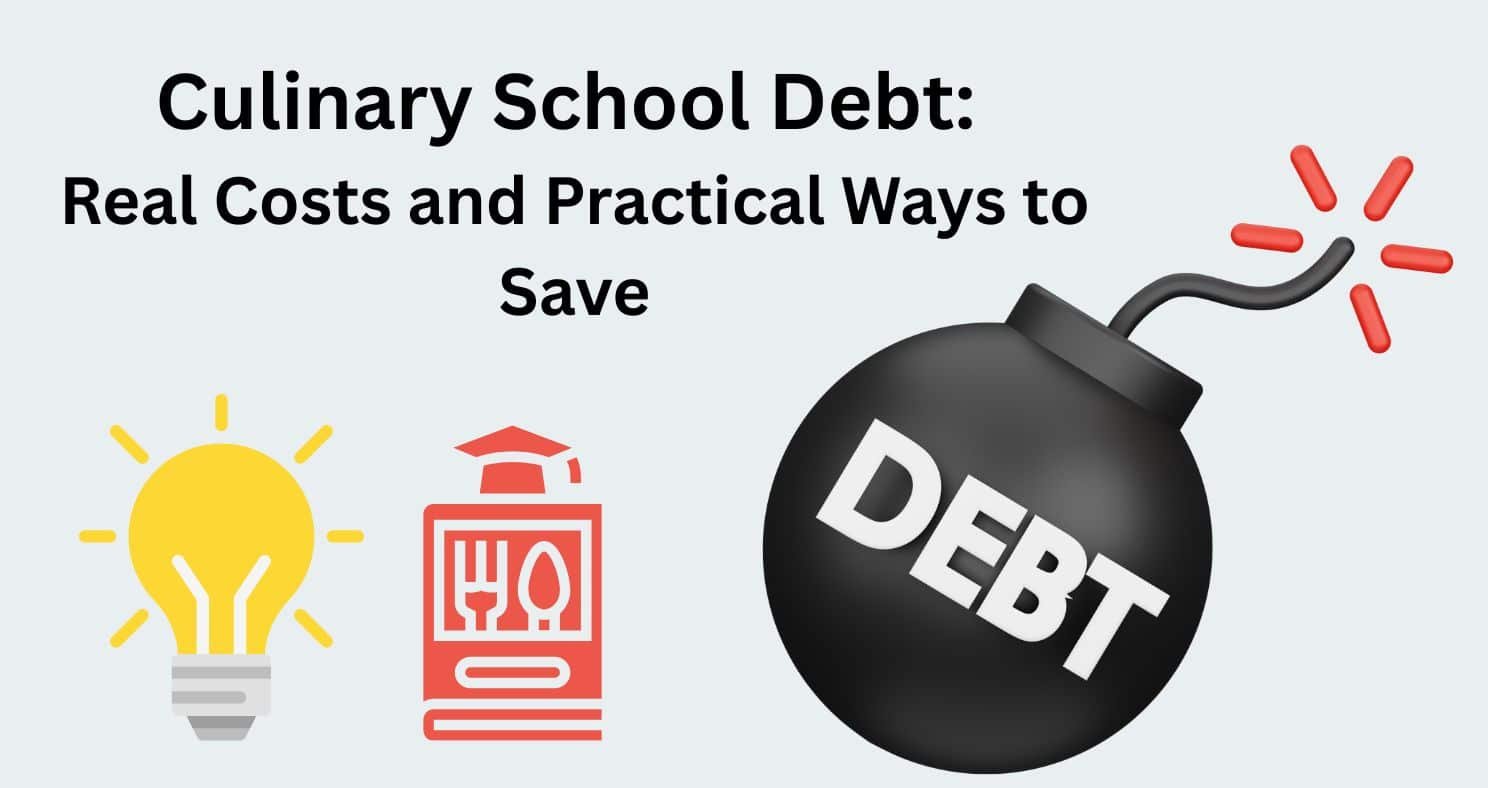A few years ago, Bradley—better known as @baddie.brad on TikTok—went viral after sharing a candid video about his $130,000 debt from a three-year culinary arts bachelor’s degree.
After graduating from one of America’s top culinary schools, Bradley found himself earning just $12 to $15 per hour, which was barely enough to cover his basic living expenses, let alone his massive student loan payments. Sadly, Bradley’s story isn’t uncommon. Many culinary graduates end up facing significant debt, only to land entry-level restaurant jobs with long hours, high stress, and low wages.
But Bradley’s experience doesn’t need to become yours. Culinary school doesn’t automatically mean you’ll be drowning in debt. So, exactly how much debt can you realistically expect, and what will your monthly payments look like?
To help answer these questions, we looked at data from the U.S. Department of Education, which tracks student debt and repayment details. Since these numbers cover entire schools, we specifically focused on private culinary institutions, which typically cost two to five times more than community college programs. Keep this in mind as you evaluate your options.
What’s the Typical Culinary School Debt?
According to Chef’s Pencil analysis of recent student debt data, the average debt is $11,905 and it ranges from about $6,333 to $16,200 (in 2022 dollars). With inflation, today’s numbers are probably a bit higher. It’s important to factor this into your financial planning.
Students graduating from the Louisiana Culinary Institute in Baton Rouge tend to have the highest debt levels, followed closely by graduates from Culinary Institute Inc. and the Auguste Escoffier School of Culinary Arts in Austin, Texas. In 2022, monthly repayments averaged $127 (ranged between $67 and $172) —but expect these numbers to be higher now due to rising inflation and increased interest rates.
Below is a table showing the median total debt after graduation and the typical monthly loan payment for all culinary schools with available data.
Culinary School
City
Median Total Debt After Graduation
Typical Monthly Loan Payment
Louisiana Culinary Institute
Baton Rouge, LA
$16,200.00
$171.75
Culinary Institute Inc
Houston, TX
$16,004.00
$169.67
Auguste Escoffier School of Culinary Arts-Austin
Austin, TX
$16,000.00
$169.63
Culinary Institute of America
Hyde Park, NY
$15,750.00
$166.98
Auguste Escoffier School of Culinary Arts-Boulder
Boulder, CO
$9,653.00
$102.34
Arizona Culinary Institute
Scottsdale, AZ
$9,500.00
$100.72
The Culinary School of Fort Worth
Fort Worth, TX
$9,500.00
$100.72
Jna Institute of Culinary Arts
Philadelphia, PA
$8,209.00
$87.03
Culinary Tech Center
White Plains, NY
$6,333.00
$67.14
Real-Life Example: Private vs. Community Culinary School
Consider an example from our recent analysis of culinary schools in Arizona. Graduates from the Arizona Culinary Institute, a prestigious private culinary school in Scottsdale, had a median debt of $9,500. Tuition at this private institution is roughly $27,000, with total attendance costs around $50,000.
In comparison, Scottsdale Community College, a highly affordable public option within Maricopa County, charges local residents less than $2,000 per year in tuition, with total annual attendance costs around $24,000. Median earnings after graduation are comparable between the two schools, but the debt burden at Scottsdale Community College is significantly lower. Note that these rates apply only to in-county resident students. Out-of-county or out-of-state students are typically charged higher tuition rates.
Choosing a renowned private culinary school like the Arizona Culinary Institute certainly has advantages, such as reputation and networking opportunities. However, if minimizing debt is your priority, more affordable options like community colleges are worth serious consideration.
What Influences Debt Levels and Payments?
The numbers discussed here apply only to private culinary schools, which usually have much higher tuition than public programs. Also, remember these are median figures—some students have debts significantly higher than this.
Annual tuition and related costs at private culinary schools can easily exceed $50,000, especially if you’re pursuing a longer associate or bachelor’s degree program. Naturally, longer programs lead to higher debt.
Degree Type
Earning a culinary associate degree typically costs twice as much as completing a certificate program, as it generally requires double the number of credits and takes about four semesters to finish—compared to just two semesters for most certificate programs. Pursuing a bachelor’s degree (BA) is even more expensive. This was one of the factors that got Brad into financial trouble—he enrolled in a three-year BA program, which came with a significantly higher financial commitment.
However, based on our research, average earnings five years after graduation are approximately $28,440 for certificate holders, $33,690 for associate degree graduates, and $38,583 for those with a BA degree.
While a higher degree may justify the added cost in the long run, it’s essential to carefully assess the return on investment before committing to a program.
Education Level
Typical Program Length
Estimated Cost
Average Earnings (5 Years After Graduation)
Culinary Certificate
2 semesters (6–9 months)
$2,000–$30,000
$28,440
Associate Degree
4 semesters (2 years)
$6,000–$40,000
$33,690
Bachelor’s Degree (BA)
3–4 years
$30,000–$60,000+
$38,583
Interest Rates and Loan Types
The Department of Education’s data only includes federal loans issued directly by schools. It doesn’t cover private student loans or parent PLUS loans, both of which often have higher interest rates.
All federal Direct Loans carry a fixed interest rate of 6.53% for the 2024–2025 academic year, while Direct PLUS Loans have a substantially higher rate of 9.08%. Moreover, many private student loans come with even higher interest rates, which can significantly increase both your monthly payments and the total amount you repay over time.

For more information about loan types and subsidized and direct unsubsidized loans visit the Federal Student Aid website.
Practical Ways to Reduce Culinary School Debt
To effectively manage or reduce culinary school debt, consider these practical options:
Scholarships and Grants: Take the time to research and apply for scholarships and grants tailored specifically to culinary students. This funding can greatly reduce your overall educational costs.
Apprenticeships: Gaining practical experience through an apprenticeship allows you to learn on-the-job while earning money, reducing or eliminating the need for student loans.
Financial Planning: Thoroughly explore your financial options, including federal loans, interest rates, repayment plans, and budgeting strategies to minimize your long-term debt impact.
Community Colleges: Attending a local community college can significantly lower your education costs. These institutions often offer strong culinary programs at a fraction of the price of private schools.





